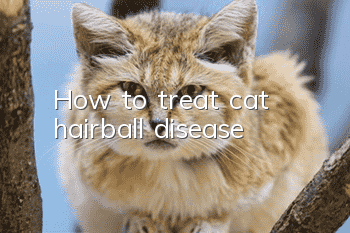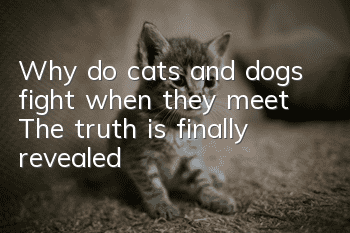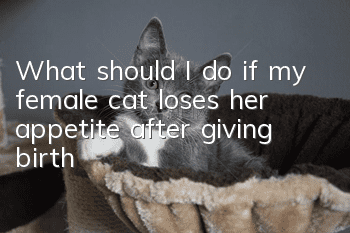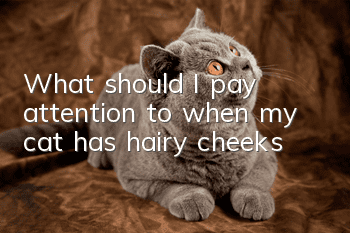How to treat cat hairball disease

Treatment methods for cat hairballs:
1. Feed cat grass: When a cat has hairballs, if it is relatively mild, you can give the cat grass Feed the cat some grass. The so-called cat grass is actually wheat seedlings, barley seedlings, oat seedlings, or ordinary grass outside. These cat grasses can induce vomiting, and cats can spit out hair balls after eating them. However, be careful not to feed too much, as repeated vomiting may cause the cat to become uncomfortable.
2. Feed hair-reducing cream: Some cats will not like to eat cat grass. Even if it is planted, they will not be interested. At this time, the owner cannot ignore it and must take precautions. At work, in addition to cat grass, you can also prepare some hair-reducing creams such as Meow Fun Balls for cats to eat. Cats like the taste of hair-reducing creams. Squeeze out a little bit to feed them in daily life, and you can eat them in normal times. Helps prevent hair ball problems.
3. Surgical removal: If the cat’s hair ball syndrome is already in an advanced stage, the above methods will be difficult to help it expel the hair balls, and the hair balls may even block the cat’s intestines, causing the cat to suffer from constipation and listlessness. , loss of appetite, etc., then you need to send the cat to a pet hospital, let the doctor remove the hair ball through abdominal surgery, and then take care of it later.
Symptoms of cat hairball syndrome:
1. Cats frequently vomit or retching and there are hairs in the vomit, and hairballs are present in the stomach or esophagus. The internal irritation of the mucous membrane will continue to cause the cat to retching frequently. If the hair ball is stuck too far forward, the cat may also have symptoms of coughing.
2. When hair ball syndrome is severe, cats will have symptoms of loss of appetite and depression. The hair ball will get stuck in the digestive tract, gastrointestinal motility will be reduced, and the cat's appetite will naturally decrease due to indigestion.
3. The hair of cats suffering from hair ball syndrome will also appear dry and frizzy. The hair that the cat licks and eats accumulates to form hair balls that block the digestive tract or trap food. The food cannot be digested and absorbed, and the cat is prone to nutrition. Otherwise, the hair will appear dry and lackluster.
4. The abdominal circumference of cats increases significantly. Some cats will experience an increase in abdominal circumference due to eating too much hair.
5. Cats suffering from hair ball syndrome will have symptoms of constipation, dry and hard stools, and hair mixed in the stools.
- Why does the kitten keep eating with its bulging belly?
- What should kittens eat if they don’t have teeth? Cat Feeding!
- Will a cat's personality change after being neutered?
- What are the advantages and disadvantages of owning a cat?
- Does it mean there are bugs when a kitten is itching?
- How to remove cat lice? Don’t you know yet?
- Is catnip harmful to cats? What will happen if a cat smokes catnip?
- Things to note when breeding British Shorthair
- The historical development and personality characteristics of the British Bobtail Cat
- Do I need to be vaccinated if I am scratched by a cat and bleed?



